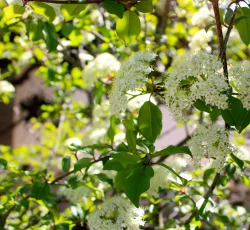
African Marigold
Tagetes erecta
This upright yellow-flowering plant, with its distinctive odor, is a classic of the summer border.
EXPLORE THIS PLANT
This upright yellow-flowering plant, with its distinctive odor, is a classic of the summer border.
EXPLORE THIS PLANT
All parts of this bold shrub are fragrant. It particularly deserves its name for the profusion of amethyst purple berries borne on its long branches.
EXPLORE THIS PLANT
Bee Balm is a tall summer-blooming perennial with brilliant red flowers subtended by a whorl of showy, red-tinged, leafy bracts. The aromatic leaves can be used for tea, but are susceptible to mildew, so this plant needs good air circulation. A member of the mint family, bee balm spreads readily by rhizomes and self-seeding to form large colonies, so be prepared to divide it every few years.
EXPLORE THIS PLANT
A cottage garden favorite, black-eyed susan features masses of ferociously yellow flowers that attract butterflies. They are incredibly hardy and tolerate a wide variety of conditions, making them ideal for naturalizing.
EXPLORE THIS PLANT
These large spring blooming shrubs with edible berries do best in natural areas where they can achieve their full size.
EXPLORE THIS PLANT
This unique plant features bright blue-purple flowers on tall green stalks followed by interesting black seedpods. It forms a deep taproot and does not transplant well, so be certain of its location before planting.
EXPLORE THIS PLANT
Give this shrub ample room to sprawl, as it tends to sucker when it's happy. The unusual chocolatey maroon flowers give off a spicy sweet fragrance which is echoed in cut twigs and leaves.
EXPLORE THIS PLANT
This clover is used primarily as a cover crop and fodder, but it is also a good nectar source for bees.
EXPLORE THIS PLANT
Crocuses cheerfully herald the coming spring with bright yellow flowers. They naturalize easily in gardens, offering clumps which grow larger year by year.
EXPLORE THIS PLANT
This small, spreading native tree offers a profusion of purplish-pink flowers lining the dark branches in April, followed by large heart-shaped leaves. The redbud evolved in the understory and wood edges of forests, where it is sheltered from intense sunlight, and is prettiest planted among dogwoods and other small spring- flowering shrubs.
EXPLORE THIS PLANT